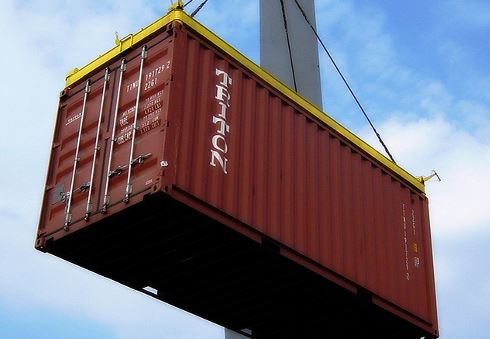Buying a container need not be a scary process. Arm yourself with these top tips today!

Image by Michael Ford via Flickr
If you’re looking into acquiring shipping containers, here’s what you need know about how to buy shipping containers.
Step 1: Shop Around
If you’re going to buy second hand shipping containers, you will notice that the pricing will vary greatly, depending on who you are buying the containers from and what condition they are in. However the age of a used shipping container won’t really play a big part in the pricing. Shipping containers are typically used for about 7 to 12 years and depending on the services the containers were used for is how their condition is determined. So age plays a very small role in the pricing of shipping containers – the main factors are structure and physical appearance.
As for “who” you buy shipping containers from, we’re talking about retailers versus individual sellers. Private sellers are usually looking to re-sell a container that they bought and retailers have direct access to containers as soon as the containers come out of service.
When it comes to buying shipping containers, buying from an individual will have certain advantages but you might be better served purchasing from an expert retailer.
Step 2: Carefully Inspect the Container
It is in your very best interest to inspect the container before you buy it. This will give you peace of mind that the product has been well and truthfully presented by the sales person.
There are a few things you should look for when inspecting the shipping container, including:
-
* The condition of the wood on the floor inside the container
-
* General exterior rust on the surface, especially near the door bottoms
-
* Pin holes in the steel panels
-
* Condition of the door gasket
Unless the used shipping container has had a paint job, chances are it will have some degree of surface rust. This is really common on the containers that have had exposure to salt air during their shipping service.
Do try to avoid shipping containers that are covered in exterior rust – these should be priced lower than other containers. There should also be the least amount possible of rust around the bottom and door areas of the shipping container.
Another important feature to carefully inspect is the door gasket. This provides a water tight seal when the doors are closed – you won’t want to store anything in a container that has rotten door gaskets or rotten areas around the doors.
The interior is also important for inspection when buying shipping containers. Focus on the sidewalls, floor and roof. Make sure the floor is solid and void of soft sports or any noticeable holes. Floors are usually made of marine plywood and it is common for floors to have some shallow gouges from being handled by forklifts. It will be easy to spot a damaged floor.
Don’t forget to check out the interior sidewalls and roof too. You will not want to buy a shipping container that has evidence of penetrations or even pinholes in the container’s panels. If there are small holes, they might be difficult to spot when the doors of the container are open so it’s a great idea to get into the shipping container and close the doors to see if there is any light penetrating through from outside.
Step 3: You Get What You Pay For
Typically second hand containers for sale can be anywhere between 10 to 15 years old. They will be structurally sound and watertight but you need to remember they have been used to ship goods all over the world via road and sea. These containers will have been lifted on and off trucks and ships many, many times, both with full loads and empty. They will have carried so many different types of products.
It’s very possible that odours can appear depending on what cargo was shipped and how often the doors were opened and closed. So make sure the list below is in order when learning how to buy shipping containers:
-
* Door hinges should work freely
-
* The shipping container should be structurally sound and watertight
-
* All the door locking bar handles ought to work freely
-
* There will likely be cosmetic issues like scuffs, scratches, surface ruse, dents and non-transferable markings, check them out carefully
-
* There should be a lock box fitted for security
-
*The wooden floors should be pretty intact
By taking the above checklist with you to view your potential shipping containers, you will ensure that the container will last a long time more.
Some suppliers offer shipping containers for sale that are older than 20 years. These aren’t going to last as long, obviously, and you might have issues with various elements if you’re going to keep the shipping container static. Keep in mind that the longer a container is used for shipping, the more it is going to deteriorate.
Final Word
Buying shipping containers can seem like a rather daunting process. But it’s really not so long as you are armed with the right information and know-how. Buy a shipping container that is in perfect condition and you can enjoy many decades of use – be it as architecture, storage or shipping. Shipping containers are affordable and widely available and super simple to modify, so you won’t have a problem finding the perfect shipping container for your unique requirements.
| < Prev | Next > |
|---|




